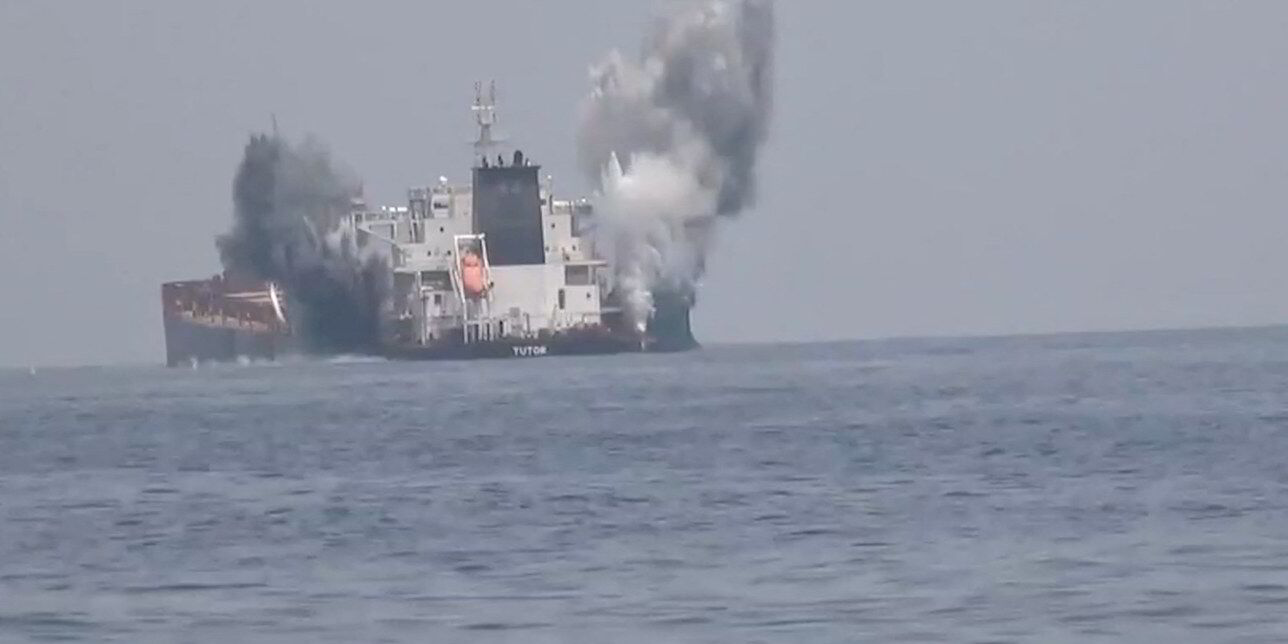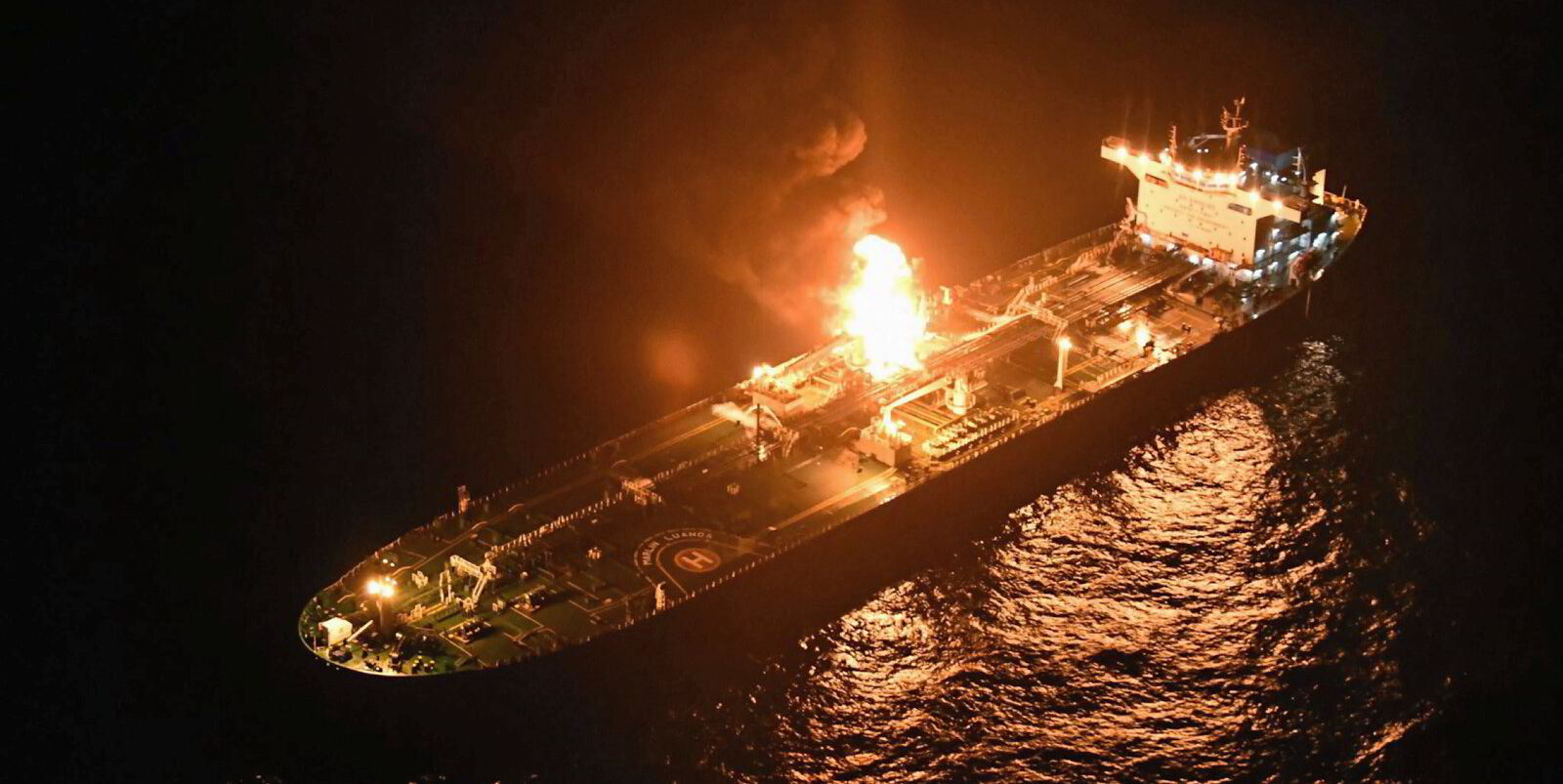The emerging Houthi tactic of using a swarm of sea drones threatens a more destructive phase of attacks against commercial shipping in the Red Sea, according to security experts.
The first sea drone was used against commercial shipping in January but had not hit a vessel until Evalend Shipping’s 82,000-dwt Tutor (built 2022) was sunk in June, with the death of one seafarer.
The sinking was followed up by reports later that month of a cargo ship being followed for an hour by 12 smaller boats, including some that were uncrewed.
The sea drones can carry a significant explosives payload to damage and sink a ship, said Max Williams, chief operating officer at security company Africa Risk Compliance.
“Because they’re close to the waterline, there’s a high potential for causing serious damage, which would have an impact on the hull integrity,” he told a Britannia P&I webinar on security threats for shipowners.
“Therefore, these are particularly dangerous.”
The use of sea drones is not a new tactic. The US reported the first use of a sea drone in January when it exploded within a couple of miles of naval and commercial ships in the Red Sea.
A demining charity found a similar drone to the one used to attack the Tutor on the Yemen coastline in February when they were called in by concerned local fishermen.
Their use by the Houthis goes back to at least 2017 when one attacked a Saudi naval vessel during the long-running war that saw the rebel group seize control of large parts of Yemen from the internationally recognised government, said Williams.
They have to be launched from a coastal area controlled by the Houthis. The attacks in 2024 have been seen largely in the Red Sea and north of the port of Hodeidah, which is controlled by the group.
The potential uptick of sea drone attacks could be a result of a short-term shortage of other available munitions owing to US-led airstrikes on Houthi positions or arms seizures by naval patrols from vessels in the region, said Williams.
But the Houthis essentially “hold a lot of the cards” and have had an outsized impact with their tactics.
The swarm of 12 small boats on 30 June did not come closer than 3 km from the unidentified vessel but “it gave an indication of how these may be used to try to overwhelm a ship”, said Williams.
The Houthis have launched more than 100 attacks on commercial ships since October 2023 that has led to the deaths of four seafarers and the sinking of three ships.
In most cases, a ship struck by a Houthi missile has been able to reach port even when set on fire.
But the record of the sea drones of one strike and one sinking points to their potentially deadly impact in the coming months.
The use of sea drones has also been used by Ukrainian officials to sink Russian vessels and then broadcast footage of the attacks secured from onboard cameras.
Read more
- Public awards and private crises: The legacy of Red Sea attacks on seafarers
- Monjasa raids Christiania and Furetank for tankers as Red Sea chaos boosts demand
- Houthis claim attacks on Maersk and MSC container ships
- Shipping stocks take a hammering as Gaza ceasefire edges closer
- New Houthi attack suspected as ‘explosions’ seen close to tanker





